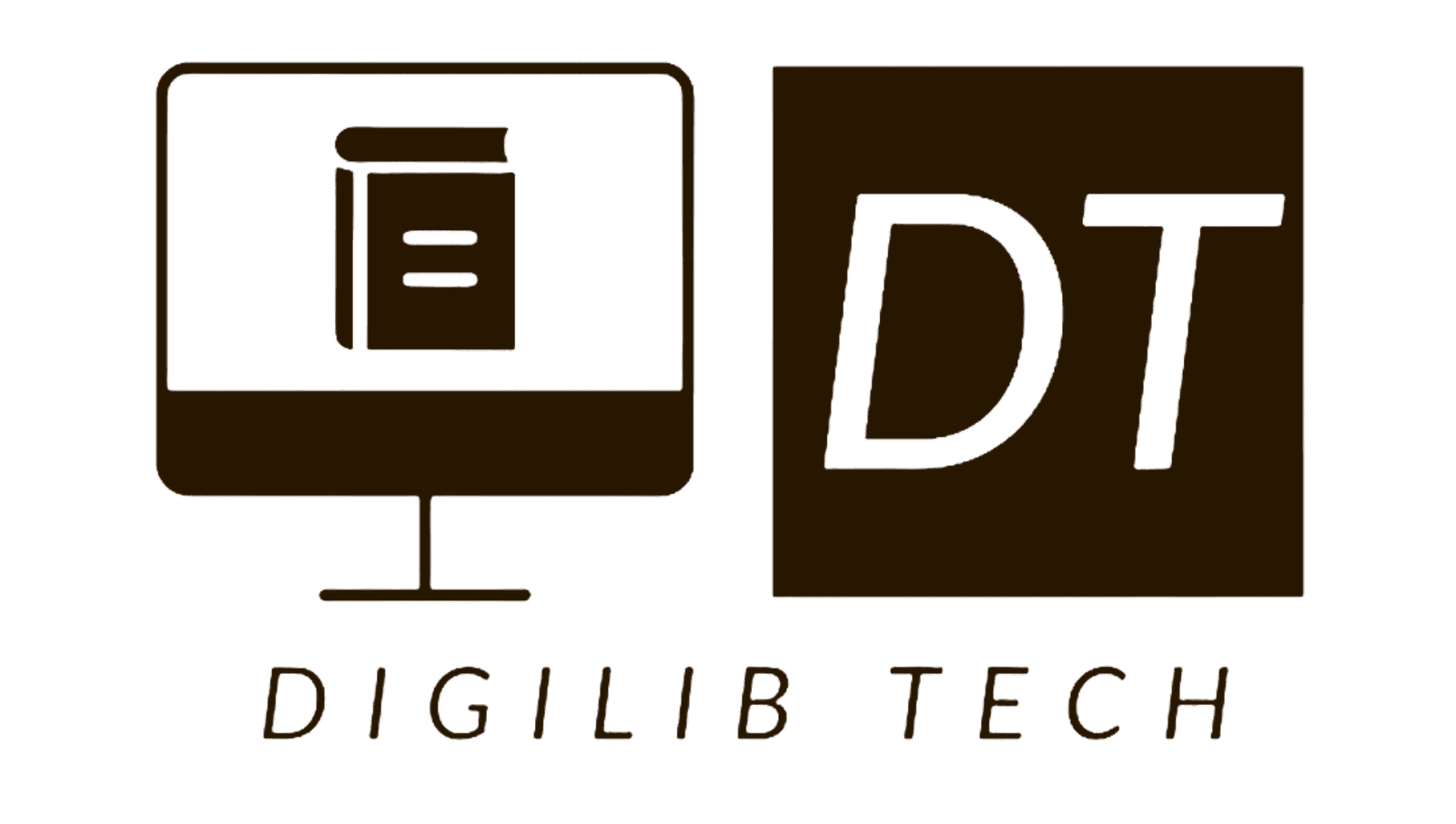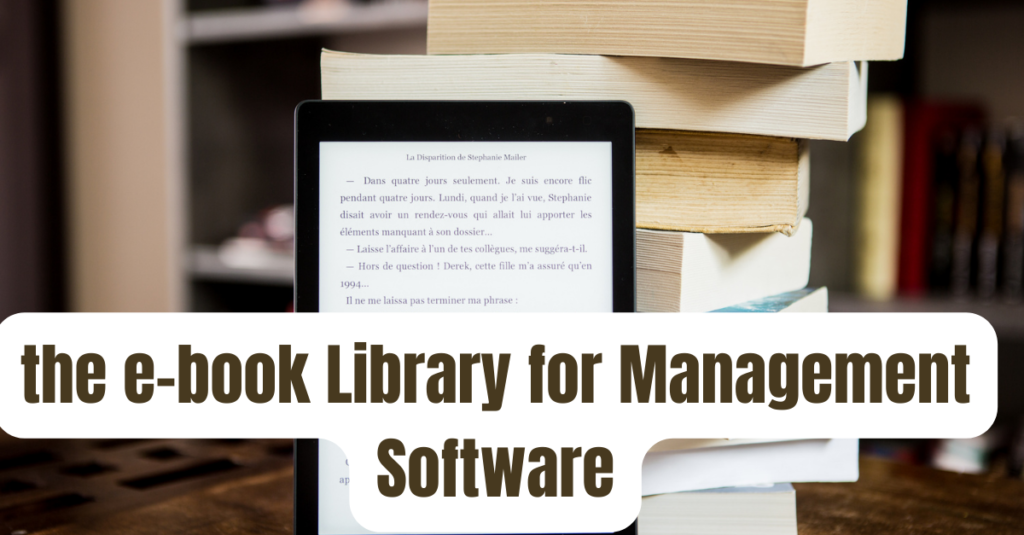eBooks, or electronic books, combine text and visuals to aid readers in learning and memory retention, unlike physical books. Also, by selecting the URLs included throughout the eBook, readers can view pertinent instructional videos. As a result, businesses and academic institutions adopt and use eLearning while simultaneously investing in eBook libraries.
To maintain the eBook library, though, they require user-friendly technological solutions that don’t require additional time or effort. As the name suggests, eBook library management software facilitates automation of eBook library control and management for organisations.

Using PCs or mobile devices, an administrator can access the web-based programme whenever needed. As a result, he may access and manage the sizable collection of electronic books from anywhere at any time. Similarly, the programme lets students access the eBooks they want whenever they want.
Students can locate and access pertinent eBooks more quickly thanks to the software’s search interface. Additionally, learners can read eBooks on tablets, laptops, cellphones, and desktop computers. In terms of features, however, the eBook library management solutions are not the same. By going over some of the eLearning tool’s salient characteristics, we can better comprehend how it is used.
Important Features
1. collection of eBooks with copyrights
Because they eliminate the requirement for content generation and optimisation, eBooks expedite the adoption of eLearning. To offer eBooks to students, an organisation must, however, deal with several publishers and abide by copyright regulations.
Organisations can access a library of eBooks that are licenced and protected by copyright through the use of eBook library management software. As a result, an organisation can more easily obtain and distribute the necessary eBooks without having to buy licences or break any copyright regulations.
2.Sharing of Selected Content
Modern digital library systems let students easily access eBooks on PCs and mobile devices. By providing curated content, they also improve knowledge acquisition and retention.
The software gathers trustworthy and pertinent content from various sources by utilising intelligence technology. Additionally, it uses artificial intelligence (AI) algorithms to suggest eBooks that are pertinent to learners.
3.Interface for Search
When learning, students frequently look for eBooks on a certain subject or idea. The user-friendly search interface of the eBook library management software facilitates learners in locating pertinent eBooks.
By inputting a topic or search phrases, a student can utilise the search interface to locate pertinent eBooks. He can simultaneously sort and scan search results according to several criteria, such as publication date, publisher, or author.
4.Tools for Managing Catalogues
Librarians list and arrange books in libraries by making catalogues. Catalogues not only make it simpler for users to locate pertinent publications, but they also provide crucial details about specific eBooks, such as the title, subject, author, collaborators, and series.
Using simple tools, administrators can build different catalogues or categories when installing the eBook library management software. Learners can more easily find pertinent eBooks based on a course or training programme by using the catalogues.
5. Software for Creating eBooks
Instructors can use simple tools to develop and upload eBooks with the help of modern library management technologies. Using the eBook maker programme, a teacher can compile or repurpose pre-existing content to create eBooks.
A corporate trainer, for example, may compile presentations, blogs, and articles on various subjects to create eBooks. Thus, by having access to current and pertinent material, learners can understand a subject more easily.
6.Multiple languages and Multiuser Support
Multilingual eBook library management systems are available. They let students search for eBooks in their native tongues and give them access to eBooks in several languages. Enterprises can train, reskill, and upskill personnel across regions thanks to the multilingual support.
Multiple students can easily use their preferred devices to access the digital library platform at the same time. Additionally, many students can access and download the same eBook concurrently from different locations.
7.Gamification of the Learning Experience
One of the newest and most popular eLearning trends is gamification. Gamification strategies are used by businesses and educational institutions to keep students interested and boost course completion rates. Modern digital library management software facilitates the gamification of learning for organisations.
By offering well-liked gamification features like coins and badges, they increase learner engagement. These gamification elements encourage students to finish their online courses on schedule and read eBooks on a regular basis.
8.APIs for integration
Application programming interfaces (APIs) act as messengers or intermediates between disparate software applications to integrate or unify them. APIs are included in cloud-based eBook library management applications. Organisations can more easily link the digital library with popular eLearning tools and platforms thanks to the APIs.
APIs are often used by organisations to interface their software with virtual classroom or learning management systems. With the integration, students enrolled in online courses or training programmes can access a variety of eBooks. In addition, by creating a single learning platform, the APIs facilitate the management and implementation of e-learning.
8.Customization Settings
Cloud-based eBook library management systems allow for on-demand customisation, in contrast to on-premise software. By purchasing the right pricing plan and gaining access to the library management software, an organisation can reduce expenses. Prominent suppliers enable businesses to select pricing schemes according to numerous criteria.
As a result, companies can alter the software based on how many eBooks or learners they have. They also enable organisations to mix and match the necessary eBooks to create a customised eBook library. An organisation or educational institution can more easily access eBooks in accordance with certain courses or training programmes thanks to the customisation options.
In summary
Organisations use eBook library management software to streamline eLearning content management during eLearning implementation. The platform not only removes the need for licence or copyright management, but it also enables any learner to read pertinent eBooks on their device of choice. However, when shortlisting and choosing eBook library management systems, decision-makers need to prioritise features.
















